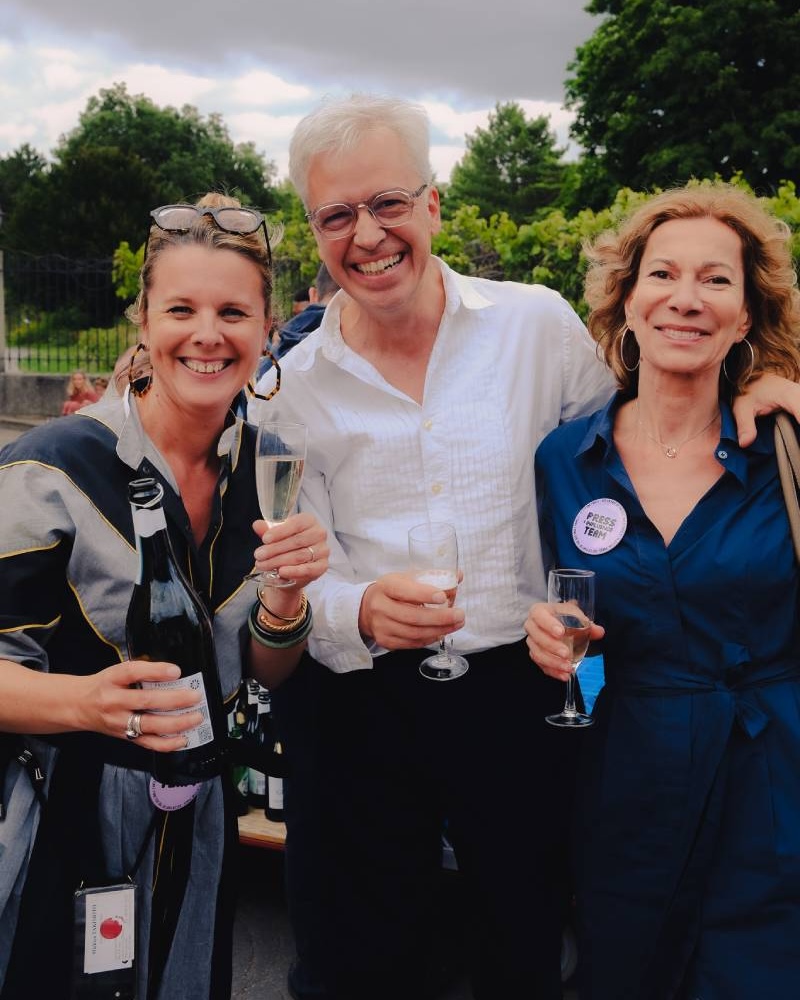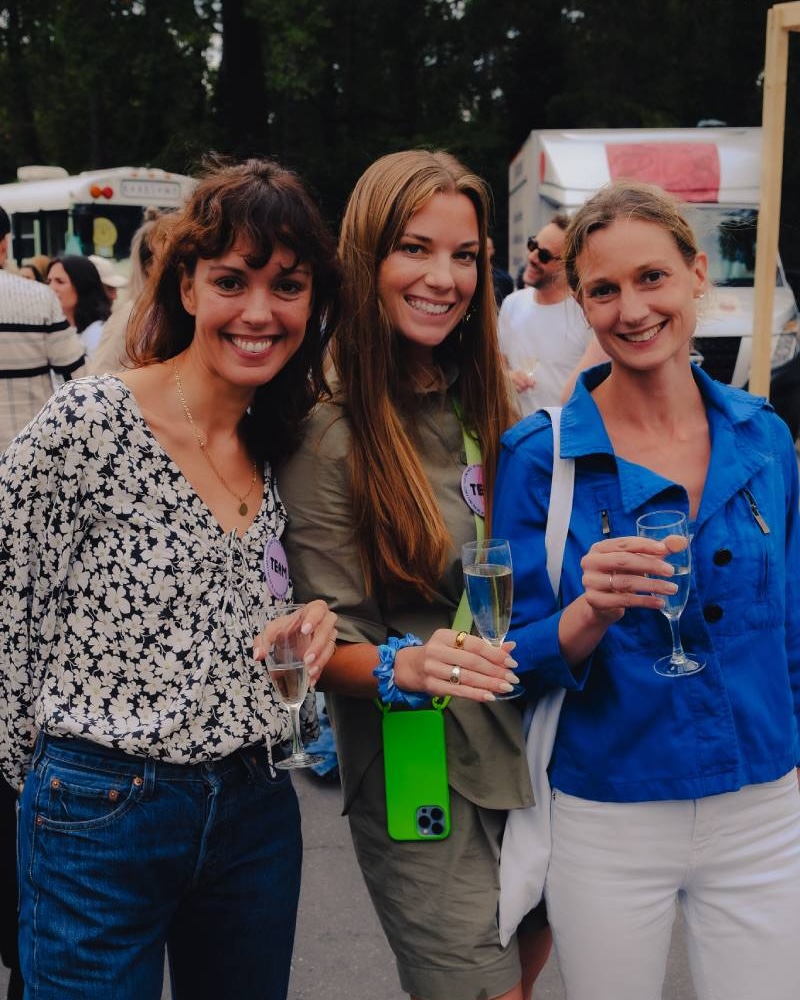The Olympics are coming — and that has us talking team. How do you lead yours to the gold? It all comes down to shared purpose, open communication, and trust.
We know, none of this is child’s play. Team building is hard. It takes work and focus, trial and error, and lots of sweat equity. Basketball legend and Olympian Michael Jordan famously said, “Talent wins games, but teamwork and intelligence win championships.”
With the Paris Olympics coming up, it’s easy to be inspired by the athletes that are so in sync they seem to glide across the fields and courts, confidently anticipating the direction of the ball by the tilt of one’s shoulders or a flick of an eye.
Although building teams for the global athletic festival is a bit different from doing so for your company, many common principles apply, says Kim Giddens, founder of executive coaching business Personologie. Giddens notes that corporate team building requires that same delicate balance of individual players and collective success. “I’m a baseball mom,” she admits, pointing to the Philadelphia Phillies as a great example of a team that embodies many key principles for winning in any arena.
“They’ve gone through tough times together, they cheer each other on, and even have gestures that they do that seem to be a shared language . . . They just seem to know each other really well.” That sort of trust and chemistry is, she says, at the heart of a strong team dynamic.
 Image from The New Society’s SS24 collection
Image from The New Society’s SS24 collectionChristine Buscarino, Chief Operating Officer and Chief Marketing Officer of the Dale Carnegie global brand, says in order to create that winning team dynamic you’re going to need a strong leader at the helm. Dale Carnegie is arguably the most prominent name in the leadership space, and Buscarino says his namesake company, famous for their catalog of leadership training programs, recently conducted new research on the topic.
Amongst the learnings was the idea that a great leader has to constantly reassess the evolving needs of their employees. “While work/life balance was a focus for many years, now it’s about meshing human needs with business needs if you want to build a win-win culture for your organization,” says Buscarino.
Human needs like flexibility and purpose are amongst those that rank high amidst this new workforce, so leaders should keep these things top of mind right from the hiring process. This includes knowing what you’re looking for in a team member beyond the role itself — basically finding people who not only add necessary skills but “fit in” with the rest of the team, which makes overall satisfaction with the job more likely.
Erin Farley, Director of Marketing of children’s fashion brand Pink Chicken says when her company hires, they’re looking for members who will “fit in nicely with the company culture and values as well as bring a new skill set and fun to the mix.” The element of fun seems right in line with the bright and poppy, print-heavy fashion label.
Estefania Grandio, founder of sustainable children’s brand The New Society, notes that she looks for a “360-degree individual, who’s a team player, both proactive and professional,” when building her team.
As a small brand with big ambition, finding someone who can appreciate the small team dynamic is not always easy. “You don’t always know that someone’s the right fit until some time has passed,” says Grandio. “The truth is,” she shares, “you often face disappointments.”
Of course, no team leader gets it right every time, and with every miss comes the reflection and refinement of one’s business processes.
But, just like you know when the team dynamic isn’t quite there, you’ll know when it is. “People working collaboratively, using their creativity and vision, supporting and celebrating each other,” is how Pink Chicken’s Farley describes the winning team dynamic.
Now that sounds like a dream team come true!
 Photo from The New Society’s SS24 collection
Photo from The New Society’s SS24 collectionReady to dive into some Olympic-style team building tips? Our experts break down the most essential elements to building a team that can bring home the gold.
Kim Giddens from executive coaching consultancy, Personologie, says aligning tasks with purpose is a first step. Giddens comes from an extensive background in fashion retail and knows firsthand the power of giving teammates a common brand goal when it comes to motivation. “If you’re not doing something that’s aligned with purpose, it just becomes a task or a job,” she says.
Christine Buscarino, COO and CMO at Dale Carnegie agrees. “With a shared purpose at the center you can create well defined goals, identify what skill sets are needed, and set milestones that all go back to that purpose. This means whenever an issue comes up, all team members understand the path forward as it supports that shared purpose.” Part of this includes showing your team how they directly connect to the company’s success, she adds. “Find a metric that’s relevant to someone’s role, whether that’s sales for an associate, sell-through for a design team, or loss prevention for your security team. Whatever it is, make sure your team knows it and how their daily work contributes to the success (or failure) of that metric. »
Erin Farley, Chief Marketing Officer at Pink Chicken, says that their shared purpose — their customers and community — is at the heart of everything they do. “No matter what role you have in the company, it all goes back to our Flock — making them feel happy, confident, engaged and helping to make their lives sunnier!”
 Image from Pink Chicken’s SS24 collection
Image from Pink Chicken’s SS24 collectionEnabling easy communication is another top tip for building a great team. Estefania Grandio, founder of The New Society notes they use tech tools Whats App, Trello, and Slack throughout the day to give direction, discuss, ask questions, and just to connect. Having different channels, both in person and online can help everyone feel heard and understood.
“As a leader, helping people understand each other is very important,” Giddens asserts, noting it’s all the more so in the face of disagreement. “When you understand where someone is coming from, you are more likely to listen respectfully and appreciate a different perspective.”
Buscarino thinks that successful communication all comes down to knowing how to have a conversation that’s not just about the work. Team leaders should try to truly understand the individual team members and how they prosper inside and outside of the organization.
Such depth of understanding is crucial in a retail environment, where managers must both be able to understand the needs and challenges of the associates on the floor as well as those of corporate management. Retail managers play a unique and crucial role as the bridge between customer-facing and corporate teams, so it’s important to prepare them for that.
“In high performing teams, the manager level must have the tools and training to be successful managing people and not just operational tasks,” Buscarino says.
As a strengths coach at Personologie, Giddens says she sees the cultivation of team members’ individual strengths as another important aspect of team building. She notes that she can usually see people’s talents quickly, and affirms that leaders with this ability will be better able to put team members in the positions where they’ll perform the strongest, creating this win-win for the employee and company.
In a time-to-market industry like fashion, quickly organizing around team members’ strengths will provide a big advantage. As Grandio notes, “everything is needed yesterday.”
Understanding what motivates your team is yet another key in getting your team in tip top shape, says Buscarino. She cites emotional drivers like encouragement, psychological safety, empowerment, and community as some of the most important things employees are looking for in their job.
Grandio says that she uses empowerment to motivate her team at The New Society and to foster responsibility. “I like to delegate and love seeing my team develop in their areas, often knowing more than I do. I enjoy giving them the freedom to make decisions and feel responsible.”
Investing in the relationship with your team will help you uncover what matters to them most, so that you can be sure that you’re addressing this need whenever possible.
A great leader has to be self-aware, says Personologie’s Giddens. “It can be a human tendency to find people who are mostly like you, but that doesn’t always help as it leaves gaps in the team.” She suggests you drill down on the skills needed for each role and hire for those.
For client-facing roles like sales associates, for instance, there needs to be a genuine curiosity about people. Other roles, like accounting or inventory management take great attention to detail. When you’re hiring, you want to spark a conversation that will help you really understand the potential team member. Giving them examples of obstacles they might face if they come on board can help uncover if they are a good fit for the role you need.
Common to all good teams is this notion of trust, and building it starts with leading by example. Grandio says, “I’ve always been the hardest working person in every job where I have led teams.” This is something she thinks inspires those around her at her fashion label to put in their best efforts.
But, as we hinted at earlier, part of building trust requires slowing down and truly getting to know your team as people beyond the work context. Buscarino says that at Dale Carnegie, they have implemented the concept of an “Innerview” where all team members are encouraged to periodically spend 30 minutes to an hour talking to other team members about anything — almost. The only topic off limits is work. “The goal is to find out what drives our people, so that we can build a culture around connection. We want to better understand their needs so that we can better support them,” she says.
Farley from Pink Chicken finds that taking relationship-building off-site is particularly effective in building trust for them. They’ve arranged activities for their team ranging from a cooking class at the Institute of Culinary Education to some high-flying acrobatics at the trapeze school on Pier 40 in New York City. Pink Chicken team members also connect over charity and volunteer initiatives, she says.
 Image from Pink Chicken’s SS24 collection
Image from Pink Chicken’s SS24 collectionThere’s no doubt that feedback is essential when you’re coaching your team to success. Team members need to know what they’re doing right, and what they can improve.
“This is what keeps me in business,” says Giddens. Giving feedback is not easy — it involves good timing, and a gentle, yet direct touch. “Delivery is important,” she says. “You’re going to have to give the feedback in a way that’s customized for your team member, in a way that they will best respond to.”
One strategy that they suggest at Dale Carnegie when giving constructive feedback is to start with discussing some of your own mistakes, Buscarino says. This shared confession helps break the ice on a tough conversation and tells the team member that mistakes are normal.
Although a lot of mind (and angst) is paid to corrective feedback, you don’t want to forget the positive feedback. “Team members want to be recognized. They want to feel acknowledged,” Buscarino notes.
Farley says that at Pink Chicken they are always looking for opportunities to give their team members the proverbial high-five. “We have a very supportive team that loves to celebrate individual and collective success. Whether it’s an email or shout out in a company meeting everyone loves to know their work matters.”
———
We don’t know about you, but after that we feel sure we know how to build our dream team! Thank you to Jennifer for this inspiring article, and to Kim Giddens, Christine Buscarino, Erin Farley, and Estefania Grandio for their insights. You can find the results of Jennifer’s dream team at her boutique in New York, Babesta.
Come discover collections from The New Society at our shows in Paris and New York this summer, and find Pink Chicken at Playtime & Kid’s Hub New York.



